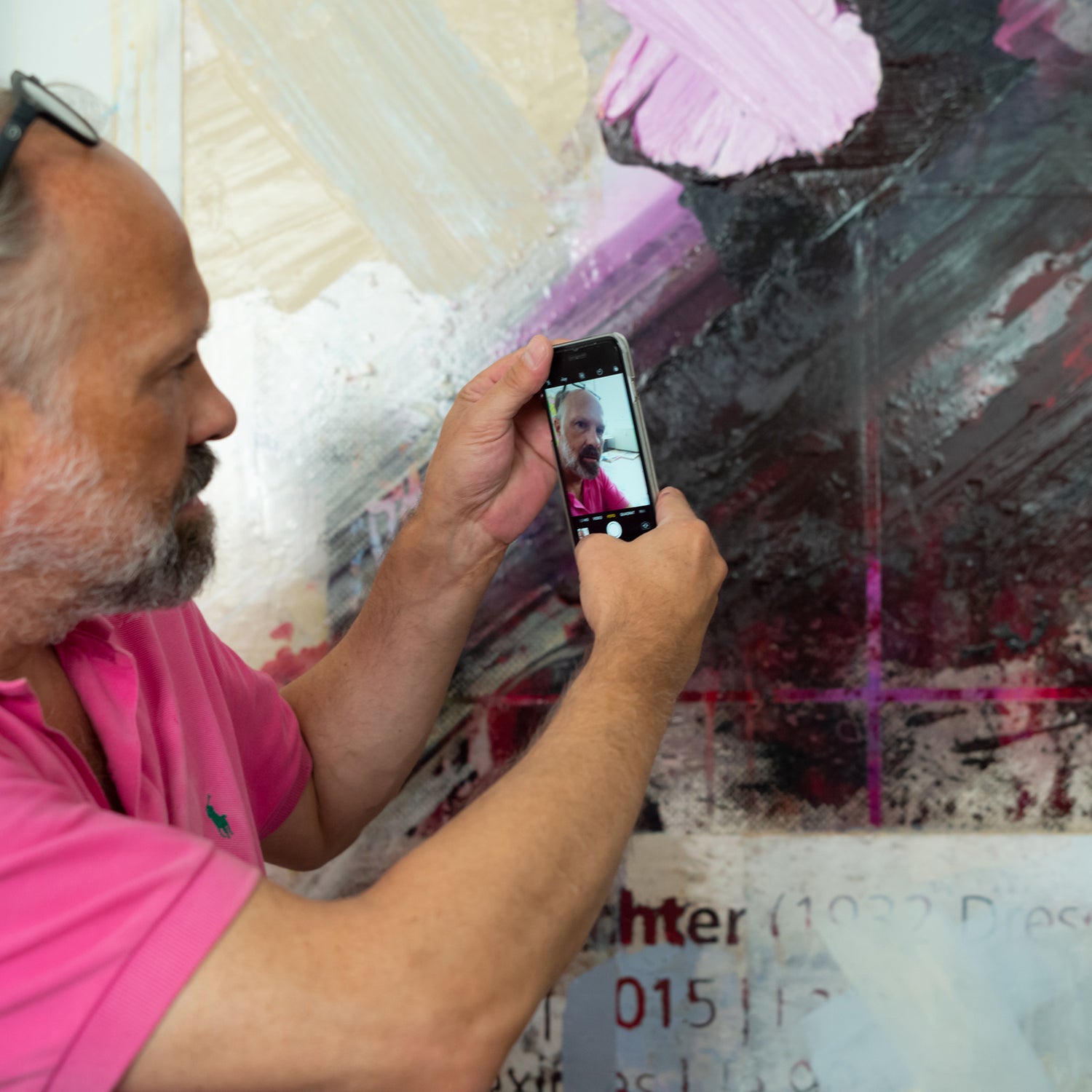Peter Vahlefeld born 1967 in Tokyo/Japan. He grew up in Hong Kong and Hamburg and lives and works in Berlin. The artist studied at Parsons School of Design Paris/NYC.
 How did you get into art?
How did you get into art?
I was very much interested in the history of art and image making. The ability to mechanically and digitally produce and reproduce images, bigger, better, and hotter was the main focus. Getting trained and working with the first Apple Macintosh computer, the interface between analog and digital painting, is what makes me tick. It is contemporary. Every day there are a myriad of images being dumped into my awareness. The various categories, media and art histories became materials to use.
How would you describe your style? What makes your work special?
I think the sculptural take on painting in dialogue with digital media is the most interesting part. The presence of color as a physical substance, takes on sculptural qualities through the complex process of layering digital pigment prints and molding oil paint as a building material. Showing a catalogue of brushstrokes, dips, daubs, sumptuous grounds and marks, juxtaposing different elements and allowing fruitful dialogues between structure and improvisation would be the description of my style. Texture. Gesture. And Surface.
 How do you go about developing your work?
How do you go about developing your work?
Order and disorder are my constant companions in the studio. Beginning each painting I seek to create a subtle but visually engaging ground/base, which serves as a foil for the next layers of prints and paint, all contained within or challenging the grid (order/disorder) and balancing shapes and colors. Using visual devices such as erasure and obfuscation, I highlight my own interpretation of the original overpainting of printed matter. By embracing their manipulation, I assert my fascination with what constitutes the meaning of images.
 Who or what influences you?
Who or what influences you?
The combine paintings of Robert Rauschenberg influenced me—to go beyond a flat surface. Then Appropriation Art: Louise Lawler, Richard Prince, Andrea Fraser—the way you deal with given images. As well as the notion that painting is some sort of action, like the paintings of Kazuo Shiraga, Emil Schumacher and Fred Thieler. It’s all about sensation and painterly spectacle. Travelling influences me; all kinds of cities; being totally immersed in the contemporary now—going to galleries, museums, museum shops and art fairs.
Make us curious. What is planned next?
I’ve just started a cooperation with the Danish design brand »Fritz Hansen«, showing my paintings in their showroom in Munich. This is an enchanting setting, because of the clash between their minimal design classics and my exhuberant paintings and how they feel complementary. Their range of reserved colors (Color Field painting) against my color explosion (Abstract Expressionism). Besides that, I am working on my next show, by the end of June, titled »Sali e Tabacchi« with a complete new set of paintings.



 Instagram
Instagram